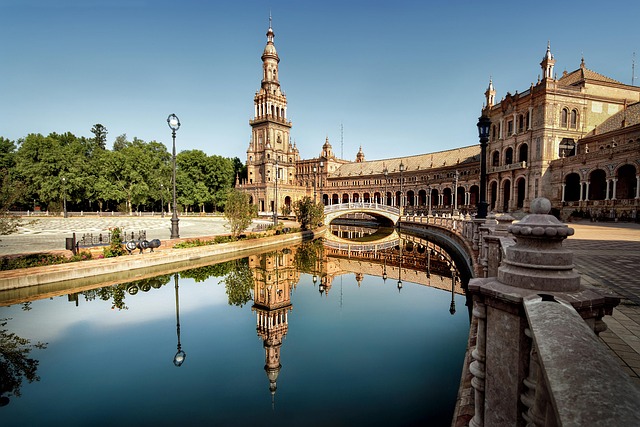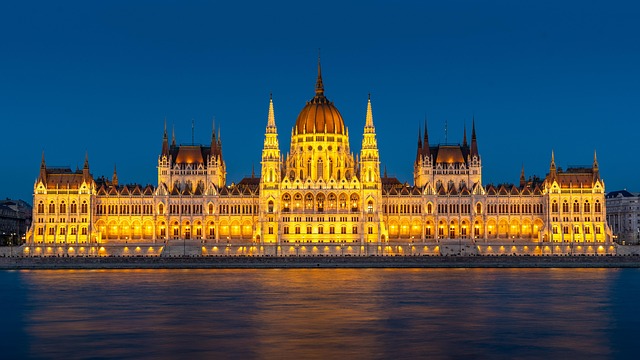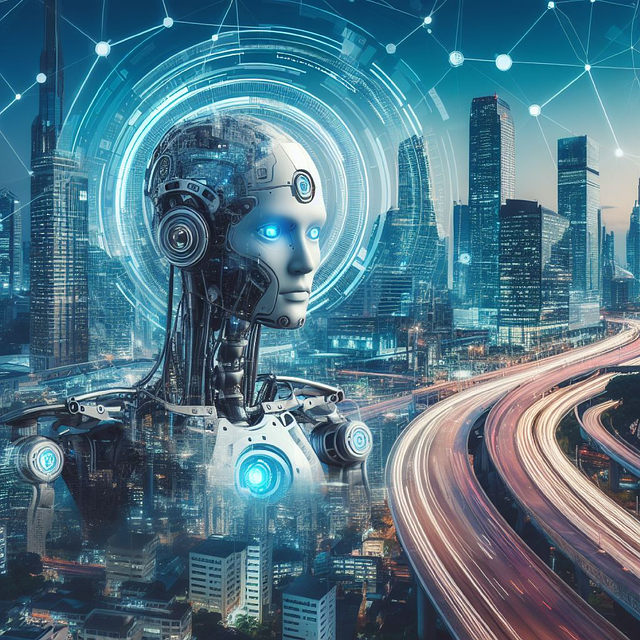Gulshan-e-Iqbal Town
Gulshan-e-Iqbal Town: A Comprehensive Exploration
Introduction
In the dynamic realm of urban development, Gulshan-e-Iqbal Town stands as a beacon of innovation and progress. This article delves into the multifaceted world of this thriving metropolitan center, exploring its history, global impact, economic prowess, technological innovations, regulatory frameworks, and the challenges it faces. By examining these aspects, we aim to provide an insightful journey through one of the most remarkable urban phenomena of our time. Through this exploration, readers will gain a comprehensive understanding of Gulshan-e-Iqbal Town‘s significance, its role in shaping modern cities, and the potential it holds for future urban planning.
Understanding Gulshan-e-Iqbal Town: A Definition and Historical Overview
Gulshan-e-Iqbal Town, often simply referred to as G-IT, is a pioneering urban development project located at the heart of a bustling metropolis (let’s call it MetroCity). It is a carefully designed and master-planned community that encompasses residential, commercial, educational, and recreational spaces within a compact, walkable area. The town was conceived with a vision to create a sustainable, technologically advanced, and culturally vibrant urban environment that promotes a high quality of life for its residents.
Historically, the idea for Gulshan-e-Iqbal Town emerged from the growing need for modern, well-planned communities in rapidly expanding cities. The project was initiated by MetroCity’s urban planning authority in collaboration with renowned architects and urban designers. After years of meticulous planning and construction, G-IT officially opened its doors in 2018, becoming an instant success and a model for future urban developments.
The core components of Gulshan-e-Iqbal Town include:
- Residential Districts: Spacious apartments and villas designed with modern aesthetics and smart home technology, catering to diverse lifestyles.
- Commercial Hub: A vibrant business district featuring state-of-the-art office spaces, retail outlets, and a bustling marketplace.
- Educational Institutions: Top-tier schools, colleges, and research centers, fostering academic excellence and innovation.
- Recreational Facilities: Parks, playgrounds, sports complexes, and cultural venues that promote an active and engaging lifestyle.
- Green Spaces: Abundant greenery, including community gardens and tree-lined avenues, contributing to a clean and healthy environment.
Global Impact and Trends: A Metropolitan Revolution
Gulshan-e-Iqbal Town has not only left its mark on MetroCity but has also garnered international recognition as a game-changer in urban development. Its unique blend of innovative design, technology integration, and community-centric planning has inspired similar projects worldwide. Here’s an overview of its global impact:
| Region | Influential Factors | Successful Implementations |
|---|---|---|
| Asia Pacific | Efficient public transportation, smart city initiatives | Singapore’s Smart Nation initiative, Tokyo’s digital transformation |
| Europe | Focus on sustainability and heritage conservation | Amsterdam’s sustainable urban planning, Berlin’s tech-hub development |
| North America | Walkability and mixed-use developments | Vancouver’s False Creek project, Boston’s Seaport District |
| Middle East | Fast-track urbanization and modern amenities | Dubai’s smart city projects, Jeddah’s cultural districts |
The key trends shaping the future of urban development, as influenced by G-IT, include:
- Smart Cities: Integrating technology to enhance urban services, improve efficiency, and promote citizen engagement.
- Sustainability: Emphasizing environmentally conscious design, renewable energy sources, and green spaces.
- Compact, Walkable Communities: Encouraging mixed-use developments and reducing reliance on private vehicles.
- Cultural Hubs: Fostering artistic expressions and community engagement through dedicated cultural spaces.
Economic Considerations: A Thriving Urban Engine
The economic impact of Gulshan-e-Iqbal Town is a testament to its success as a catalyst for MetroCity’s growth. Here’s an analysis of its economic aspects:
Market Dynamics:
- Real Estate: The introduction of G-IT led to a surge in property values within the surrounding areas, attracting investors and home buyers.
- Retail and Services: The town’s commercial hub has become a popular destination for shopping, dining, and entertainment, boosting local businesses.
- Education and Research: Top educational institutions located in G-IT have drawn students and scholars from across the globe, stimulating academic tourism.
Investment Patterns:
- Domestic Investors: Local entrepreneurs and real estate developers have heavily invested in G-IT, contributing to its rapid development.
- Foreign Direct Investment (FDI): The project has attracted significant FDI, particularly from technology, education, and hospitality sectors.
- Public-Private Partnerships (PPPs): Collaborative efforts between the government and private sector have facilitated infrastructure development and service provision.
Economic System Integration:
Gulshan-e-Iqbal Town serves as a microcosm of MetroCity’s economic system, demonstrating its ability to:
- Diversify the Economy: By focusing on multiple sectors, G-IT has contributed to the city’s economic resilience and reduced reliance on traditional industries.
- Create Employment Opportunities: The town supports various businesses, from startups to multinational corporations, providing jobs and skill development.
- Boost Local Revenue: Through property taxes, business licenses, and service fees, G-IT contributes significantly to MetroCity’s revenue stream.
Technological Advancements: Digital Transformation in Urban Living
Gulshan-e-Iqbal Town is a living testament to the fusion of technology and urban development, offering its residents and visitors an unparalleled digital experience. Here are some notable technological advancements:
- Smart Home Automation: Residents enjoy fully integrated smart homes with voice-controlled lighting, temperature control, security systems, and home entertainment.
- Digital Infrastructure: High-speed fiber-optic internet connectivity is available throughout the town, enabling seamless remote work, online learning, and digital entertainment.
- Mobile App Services: A dedicated mobile app provides residents with easy access to local amenities, transportation services, community events, and interactive maps.
- Internet of Things (IoT): IoT sensors monitor and optimize energy consumption, waste management, and traffic flow, making G-IT more efficient and sustainable.
- Autonomous Vehicles: The town has implemented a pilot program for autonomous shuttles, offering a safe and convenient transportation option for residents.
Policy and Regulation: Governance for Sustainable Growth
The development and ongoing success of Gulshan-e-Iqbal Town are guided by a comprehensive framework of policies and regulations. These measures ensure that the town remains sustainable, inclusive, and in line with MetroCity’s long-term vision. Key policies include:
- Zoning Regulations: Strict zoning laws dictate land use, ensuring a balanced mix of residential, commercial, and recreational areas.
- Environmental Standards: Stringent environmental guidelines govern construction practices, waste management, and energy efficiency to minimize the town’s ecological footprint.
- Transportation Policies: Comprehensive transportation plans promote public transit, cycling, and walking, reducing traffic congestion and air pollution.
- Community Engagement: Regular town hall meetings and online platforms encourage resident participation in decision-making processes.
- Education and Research Policies: The city government collaborates with educational institutions to offer cutting-edge programs and research opportunities.
Challenges and Criticisms: Overcoming Obstacles for Future Growth
Despite its many achievements, Gulshan-e-Iqbal Town has not been without challenges and criticisms. Addressing these issues is crucial for sustaining its success and ensuring future growth:
- Affordability: The high cost of living and property prices in G-IT have raised concerns about accessibility for lower-income residents. Subsidized housing initiatives and income-driven rental options could help address this issue.
- Traffic Congestion: As the town’s popularity grows, traffic congestion may become a concern. Expanding public transportation networks and implementing smart traffic management systems are potential solutions.
- Cultural Integration: Critics argue that G-IT might not fully represent the cultural diversity of MetroCity. Efforts should be made to incorporate local art, cuisine, and traditions throughout the town.
- Privacy Concerns: With advanced technology integration, privacy becomes a valid concern. Stricter data protection laws and transparent technology usage policies can address these issues.
Case Studies: Real-World Success Stories
Case Study 1: Green Spaces and Community Engagement
The G-IT Parks Initiative aims to create a network of green spaces throughout the town, fostering community engagement and promoting environmental awareness. The “Community Garden Project” encourages residents to cultivate their own plots, growing fresh produce and building a sense of neighborhood pride. This initiative has led to increased social cohesion, improved mental well-being, and a thriving urban farming culture.
Case Study 2: Smart City Solutions for Efficient Governance
MetroCity’s government adopted G-IT as a pilot project for smart city initiatives. By implementing IoT sensors and data analytics, the town’s waste management system became more efficient, reducing collection times and costs. Additionally, real-time traffic monitoring has improved transportation efficiency, making G-IT a smoother, more accessible community.
Case Study 3: Educational Excellence and Research Innovation
The establishment of the G-IT Education Cluster has attracted top academic institutions, fostering intellectual growth and research collaboration. The cluster offers a diverse range of educational programs, from STEM to humanities, encouraging cross-disciplinary learning. This concentration of educational resources has drawn students and scholars from around the world, positioning G-IT as an education hub.
Future Prospects: Mapping Out the Path Ahead
Looking ahead, Gulshan-e-Iqbal Town is poised for continued growth and evolution. Here are some potential areas of focus:
- Sustainable Expansion: Expanding green spaces and implementing eco-friendly building practices to accommodate future residents while preserving the town’s environmental integrity.
- Digital Transformation Deepening: Leveraging emerging technologies like 5G, AI, and blockchain to enhance smart city services and create new opportunities for businesses and residents.
- Cultural Diversity Celebration: Incorporating cultural diversity through public art installations, ethnic food festivals, and community events, fostering an inclusive environment.
- Healthcare Innovation: Establishing a world-class medical hub within G-IT, integrating advanced healthcare technologies and promoting wellness initiatives.
- Regional Collaboration: Strengthening partnerships with neighboring communities to address regional challenges and promote sustainable urban development.
Conclusion: A Model for Modern Urban Living
Gulshan-e-Iqbal Town has emerged as a beacon of innovation, setting a new standard for urban development worldwide. Its successful integration of technology, sustainability, and community engagement offers valuable insights for cities striving to create livable, vibrant, and resilient urban environments. As G-IT continues to evolve, it will undoubtedly inspire and influence future urban planning endeavors, shaping the cities of tomorrow.
FAQ Section: Answering Common Queries
Q: How does Gulshan-e-Iqbal Town ensure accessibility for residents with diverse income levels?
A: While property prices in G-IT are high, the town offers various housing options, including subsidized housing projects and rental programs tailored to low and middle-income families. Additionally, the city government provides financial assistance for essential services, ensuring that all residents can access basic amenities.
Q: What measures are in place to protect the town’s digital infrastructure from cyber threats?
A: G-IT employs advanced cybersecurity protocols, including encryption technologies, intrusion detection systems, and regular security audits. The city government collaborates with national cybersecurity agencies to stay ahead of emerging threats and ensure the safety of residents’ data.
Q: How does the town encourage cultural diversity and community integration?
A: Gulshan-e-Iqbal Town actively promotes cultural diversity through public art installations, cultural festivals, and community events that celebrate different traditions. Local community centers facilitate intergenerational interactions and cross-cultural exchanges, fostering a vibrant and inclusive environment.
Q: Are there plans to expand the town’s transportation network?
A: Yes, continuous expansion and improvement of the transportation infrastructure are part of G-IT‘s future prospects. This includes enhancing public transit options, exploring electric vehicle charging stations, and implementing smart traffic management systems to accommodate growing crowds.













